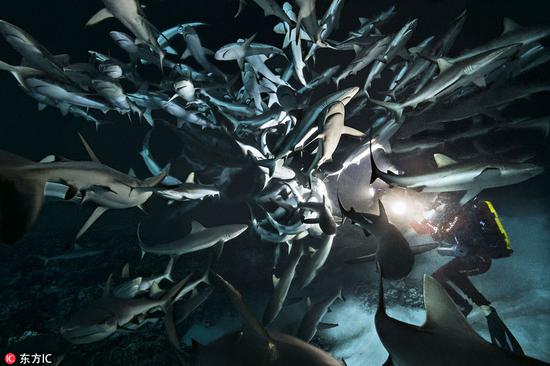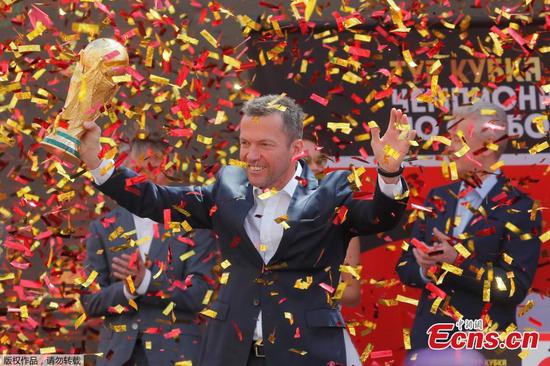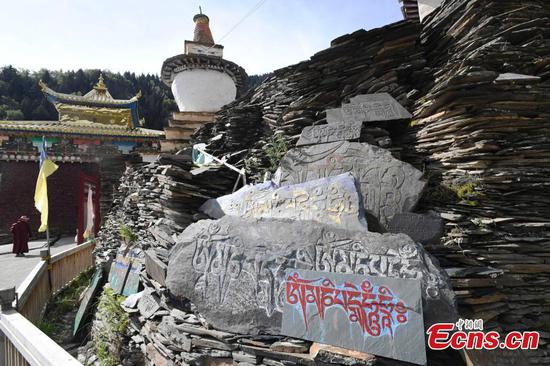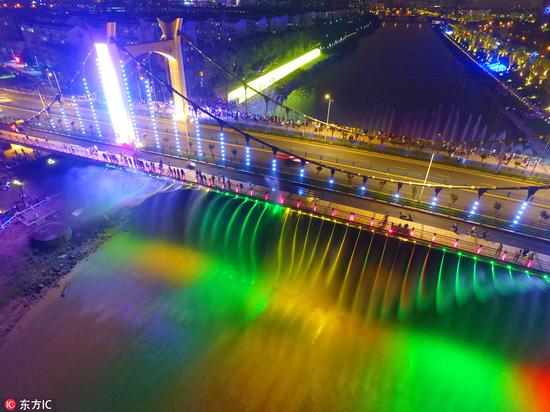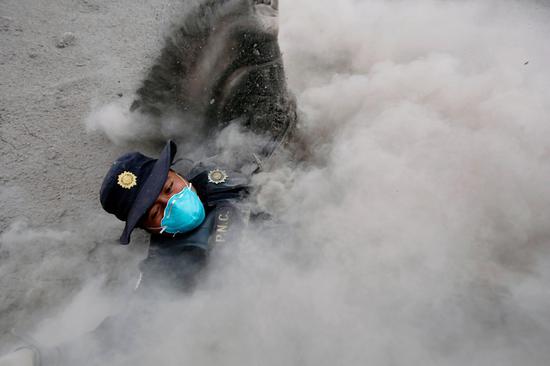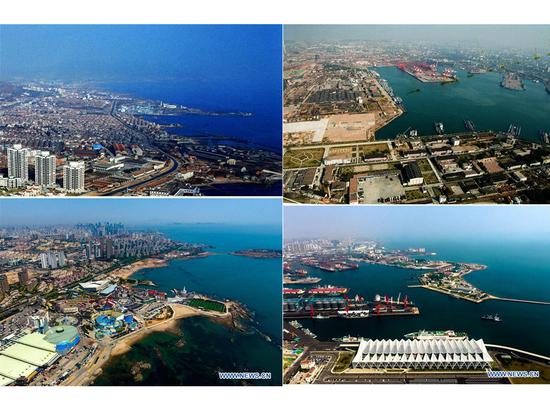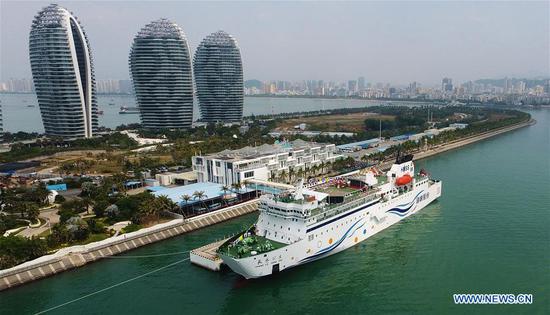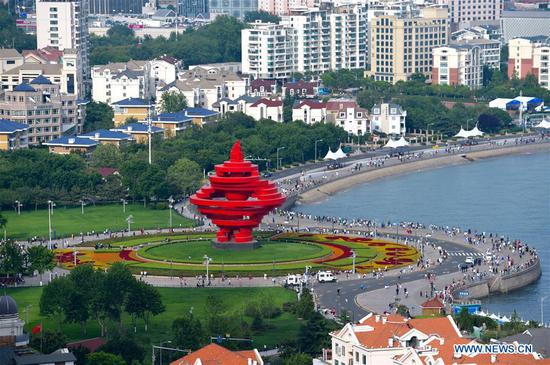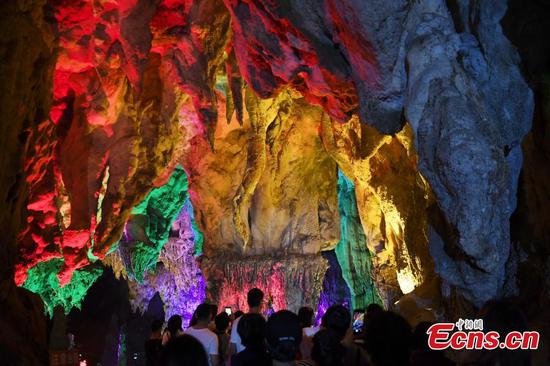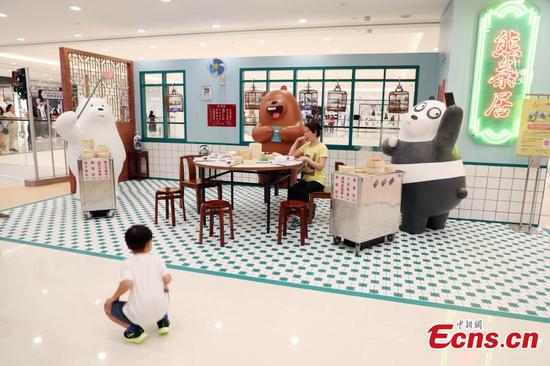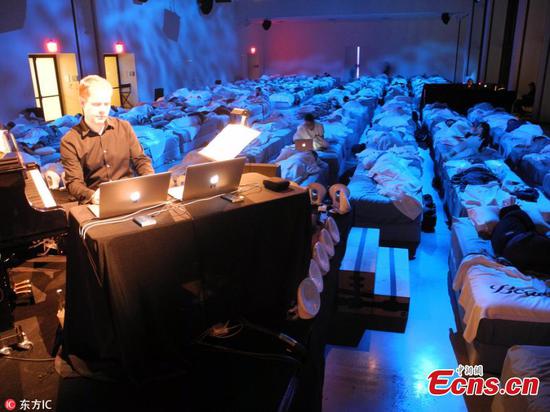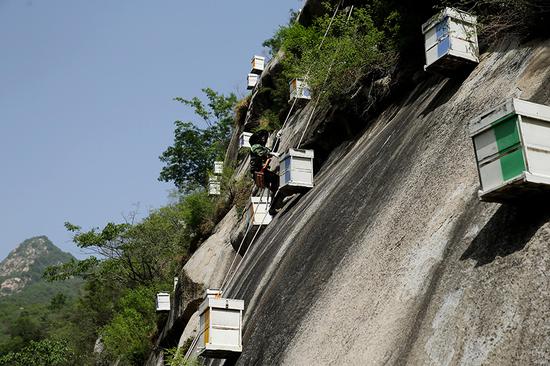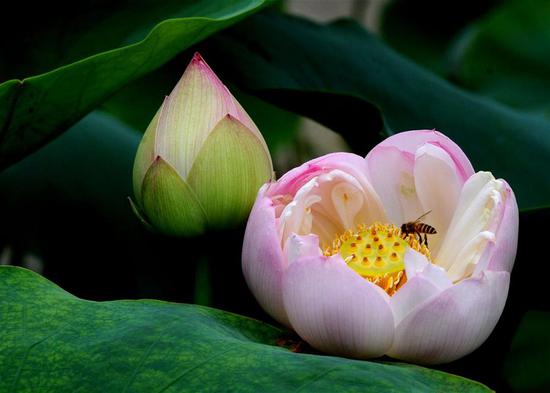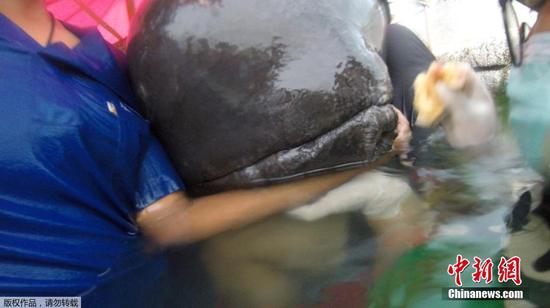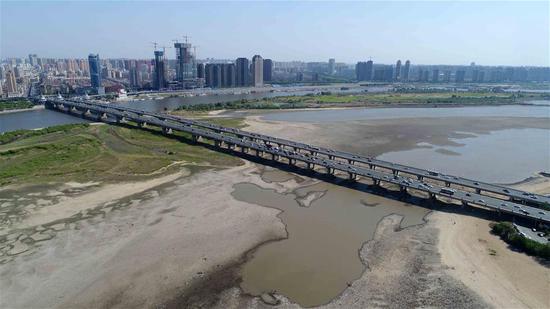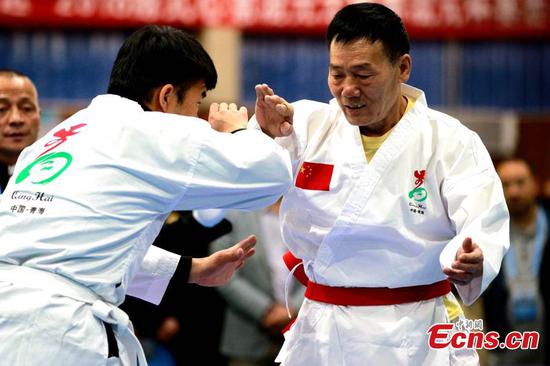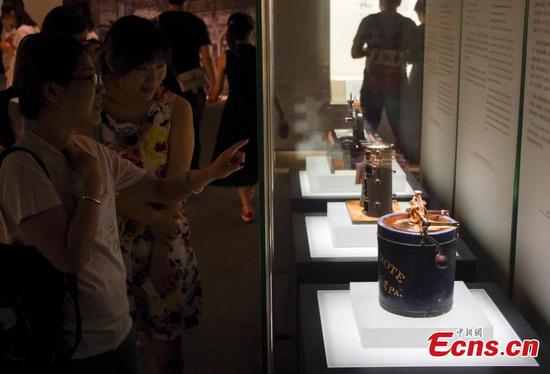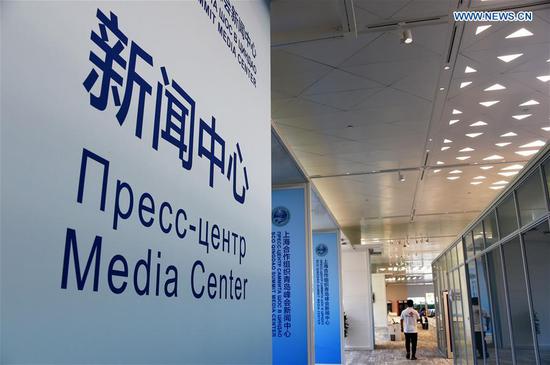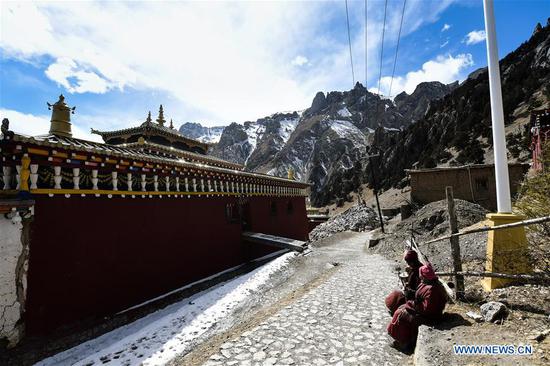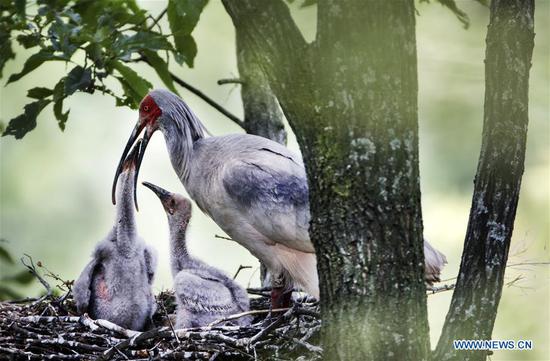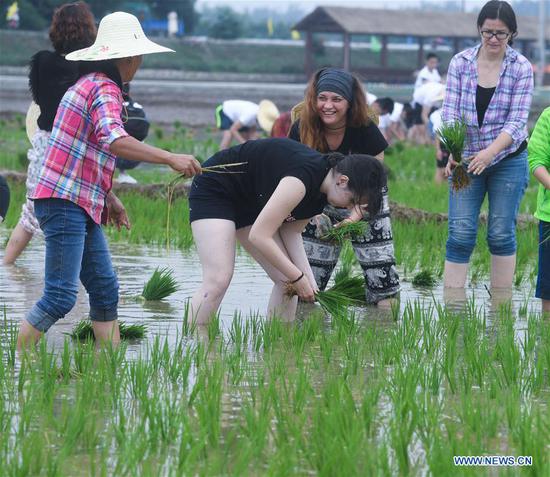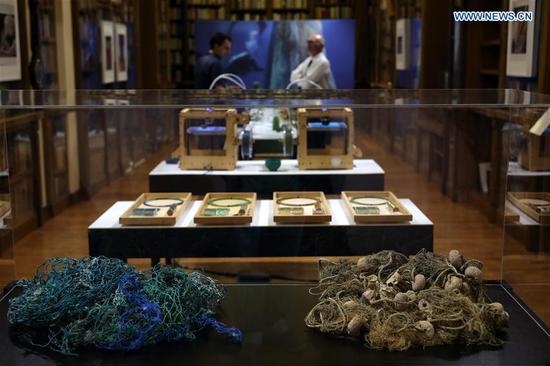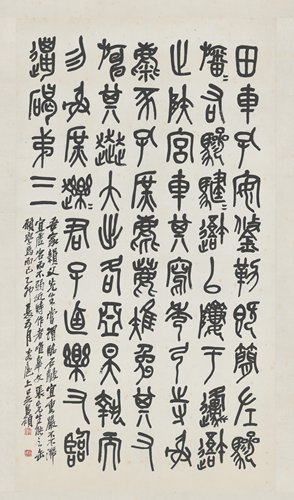
An exhibition of works by Chinese painting master Wu Changshuo marks the reopening of the Hall of Literary Glory (Wenhua Dian) in the Palace Museum in Beijing. The exhibition showcases Wu's paintings, calligraphy and seal-cutting works. Auspicious flowers are the most recognizable theme in Wu's paintings.(Photo provided to China Daily)
"However, unlike the cynical Bada Shanren, Wu treated the real world with a more open-minded attitude, and was thus more down-to-earth," Ren says.
Some of the displayed work proves Wu to be a man who not only observed life, but also fully understood how to enjoy it.
A highlighted scroll painting, A Peach Banquet with an Alcohol Jar, depicts big peaches - in a luster of red colors - with a jar of liquor. In Chinese, both peaches and alcohol are cultural symbols indicating longevity.
"The sharp contrast also mixes traditional folklore and a literati's philosophical thinking," Ren says. "It's not flamboyant, but it touches people's heart."
In another scroll painting, Precious Fruits, Wu continues to use sharp contrasts of colors.
"Each fruit in the painting seems like it is edible," Ren says. "And the words Wu left by the fruit also show he is very knowledgeable about his subject."
The words to which Ren refers describes characteristics of each fruit, as well as how they taste and where they are produced.
Another section of the exhibits highlights Wu's influence on the next generation of painters, by displaying masterpieces by followers of Wu, Qi Baishi (1864-1957) and Chen Banding (1876-1970), who became icons of Chinese artistic history in their own right.
Some of Wu's manuscripts, which were borrowed from the Beijing Fine Art Academy, are also on display to illustrate his recommendations to younger artists, including a handwritten price tag for Qi's work.
Compared with Wu, who is greatly admired within art circles, Qi, who's more of a household name, is more widely recognized by the general public in modern China.
However, a humble Qi once said that he only wanted to be the guard dog of three people after reincarnation: Xu Wei, Bada Shanren and Wu.
According to Mao Xiangyu, a researcher of painting history at the Palace Museum, Wu frequently communicated with other artists.
"He was often invited to paint or write calligraphy for friends," Mao says. "Some works are a reflection of his friendship with other artists." Other artists also gave him gifts. For instance, two portraits of Wu at the exhibition - one portraying him in a casual and half-naked lounging posture and one of him wearing a Qing Dynasty official's robe - were drawn by his tutor and friend Ren Bonian. The two pieces are on loan from the Zhejiang Museum in Hangzhou.
"Other than his excellent skills, Wu's great reputation and high status in art history are also partially due to such communication with fellow artists," Mao says.
Ren Wanping adds: "Wu lived in a pivotal time when China made the transition from a traditional to a modern society." Therefore, he simultaneously inherited old traditions as well as adopting the spirit of the age.
An independent section of the exhibition also focuses on Wu's calligraphy and seal-cutting work, which may remind people of an easily forgotten fact: Wu only began to learn painting in his 40s. Before that, he was an established calligrapher.
In one displayed piece, Wu mixes a rubbing of bronze cauldrons, calligraphy and paintings of flowers, which shows his versatility.
"Wu mixes calligraphy techniques into his paintings later on," Nie notes. "It's one of the things that give his painting new life."
According to Shan Jixiang, director of the Palace Museum, much work has been done for the opening of the Hall of Literary Glory as a gallery for ancient paintings.
The original ceilings and floors of the ancient building were kept to maintain a harmony between exhibits and the environment, but extra facilities, including lighting and temperature-control systems, were also added in a "reversible way." He also reveals that all of the museum's major exhibition spaces will be redesigned or renovated within the next three years.











